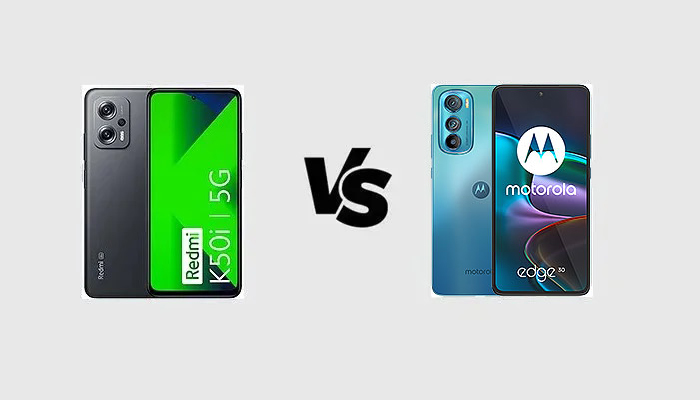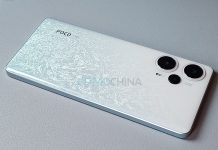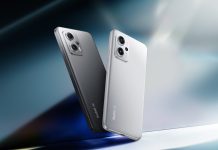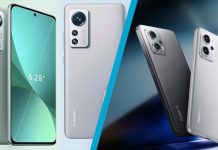I love the Redmi K50i because of its quality price ratio. It offers a few specifications you can usually find on midrange and budget phones, but at the same time, it has a few flagship-killing specifications as well. It is a perfect phone for gamers and for those who seek the highest performance, but you can find it at very reasonable prices. There is another category of devices closer to this, but more suitable for casual users instead of niches: the upper midrange phones. One of the latest devices in this category is the Motorola Edge 30 and we believe it is a perfect competitor for the Redmi K50i. This is the reason why we decided to publish a comparison between the main specifications of the Redmi K50i by Xiaomi and the Motorola Edge 30. You should like this comparison if you love phones with high value for money and balanced specifications.

Xiaomi Redmi K50i vs Motorola Edge 30
| Xiaomi Redmi K50i | Motorola Edge 30 | |
|---|---|---|
| DIMENSIONS AND WEIGHT | 163.6 x 74.3 x 8.9 mm, 200 g |
159.4 x 74.2 x 6.8 mm, 155 g |
| DISPLAY | 6.6 inches, 1080 x 2460 pixels (Full HD+), FFS LCD | 6.5 inches, 1080 x 2400 pixels (Full HD+), AMOLED |
| PROCESSOR | Mediatek Dimensity 8100 Max, octa-core 2.85 GHz | Qualcomm Snapdragon 778G+, octa-core 2.5 GHz |
| MEMORY | 6 GB RAM, 128 GB – 8 GB RAM, 128 GB – 8 GB RAM, 256 GB | 6 GB RAM, 128 GB – 8 GB RAM, 128 GB – 8 GB RAM, 256 GB |
| SOFTWARE | Android 12, MIUI | Android 12 |
| CONNECTIVITY | Wi-Fi 802.11 a/b/g/n/ac/6, Bluetooth 5.3, GPS | Wi-Fi 802.11 a/b/g/n/ac/6e, Bluetooth 5.2, GPS |
| CAMERA | Triple 64 + 8 + 2 MP, f/1.9 + f/2.2 + f/2.4 16 MP f/2.5 front camera |
Triple 50 + 50 + 2 MP, f/1.8 + f/2.2 + f/2.4 32 MP f/2.3 front camera |
| BATTERY | 5080 mAh, fast charging 67W | 4020 mAh, Fast Charging 33W |
| ADDITIONAL FEATURES | 5G, dual SIM | 5G, dual SIM |
Design
If you are looking for the best design, you should choose the Motorola Edge 30 without thinking twice. It is one of the thinnest and most lightweight phones in the market, probably the thinnest and most lightweight of 2022. It is just 6.8 mm thick and it weighs just 155 grams. Despite that, it is water repellent and its front glass is protected by Gorilla Glass 3. However, it is not built with premium materials, as it comes with a plastic back and a polycarbonate frame too. The Motorola wins the design comparison, but the Redmi K50i is all but ugly. It is definitely thicker, but it has a high screen to body ratio and a beautiful rear cover, even though it is not made with premium materials. So both these phones are pretty nice, but now you know what to choose.
Display
The Motorola Edge 30 is the winner even when it comes to the display. There is no way for the Redmi K50i to compete. The Edge 30 is equipped with an AMOLED panel that is able to show up to one billion colors with a diagonal of 6.5 inches, a Full HD+ resolution of 1080 x 2400 pixels, a 144 Hz refresh rate, and the HDR10+ certification, as well as an in-display optical fingerprint reader. With the Redmi K50i from Xiaomi sub-brand, you get a disappointing LCD display in terms of image quality. Well, it is not a bad panel with its HDR10 certification and Dolby Vision support, but it is far from the AMOLED display of its rival. It has a diagonal of 6.6 inches, a Full HD+ resolution of 1080 x 2460 pixels, the Gorilla Glass 5 protection by Corning, and a 144 Hz refresh rate. The fingerprint reader is side-mounted, on the power key. Both the handsets feature stereo speakers and provide good audio quality.
Specs & Software
The most powerful processor is the one found on the Redmi K50i. We are referring to a Dimensity 8100 SoC by MediaTek built with a 4 nm production process and sporting an octa-core architecture. This chipset is composed of four Cortex A78 CPUs running at a max frequency of 2.85 GHz, four Cortex A55 CPUs running at a max frequency of 2 GHz, and a Mali G610 MC6 GPU. The SoC is paired with up to 8 GB of RAM and up to 256 GB of UFS 3.1 native storage. The Motorola Edge 30 has the same memory configuration but with a lower-end Qualcomm Snapdragon 778G Plus mobile platform running at a max frequency of 2.5 GHz and including an Adreno 642L GPU. Both the handsets run Android 12 out of the box, but the user interface of the Motorola is close to stock Android, while the Redmi has a customized user interface based on Android 12.
Camera
The Motorola Edge 30 is equipped with a better rear camera setup. It is composed of a 50 MP main camera (the great Sony IMX766 sensor) including OIS, a 50 MP ultrawide sensor, and a 2 MP depth sensor. The Redmi K50i has a triple camera composed of a midrange-class 64 MP main sensor, an 8 MP ultrawide lens, and a 2 MP macro camera: there is definitely no challenge between these two phones. The Motorola is better even when it comes to selfies, thanks to a 32 MP front snapper against just 16 MP found on the Redmi.
Battery
Last but not least, is the battery. The Redmi K50i provides a longer battery life thanks to its huge 5080 mAh battery and it even charges quicker thanks to 67W fast charging. Unfortunately, the battery is the weak point of the Motorola Edge 30: it has a sleeker design, but the capacity is just 4020 mAh.
Price
Motorola Edge 30 starts from Rs. 28,900 / $365 in the Indian market, while the Redmi K50i begins at Rs. 25,999 / $329. If it was not for the small battery, the Motorola Edge 30 would be a much better phone than the K50i. But despite that, it still wins this comparison. Which one would you pick?
Xiaomi Redmi K50i vs Motorola Edge 30: PRO and CONS
Xiaomi Redmi K50i
PRO
- Better chipset
- Faster charging
- Bigger battery
CONS
- LCD display
- Inferior camera
Motorola Edge 30
PRO
- Better rear cameras
- Superior front camera
- Better display
- Water repellent
- Wider availability
CONS
- Smaller battery
RELATED
- OPPO Find X5 vs Find X5 Pro vs Find X5 Lite: Specs Comparison
- Xiaomi Mi 11 Ultra vs Samsung Galaxy S21 Ultra vs OPPO Find X3 Pro: Specs Comparison
- OPPO Reno7 vs Reno7 Pro vs Reno7 SE: Specs Comparison
- Black Shark 5 Pro vs POCO F4 GT vs Xiaomi 12: Specs Comparison
Check the latest videos from our YouTube channel and subscribe:







